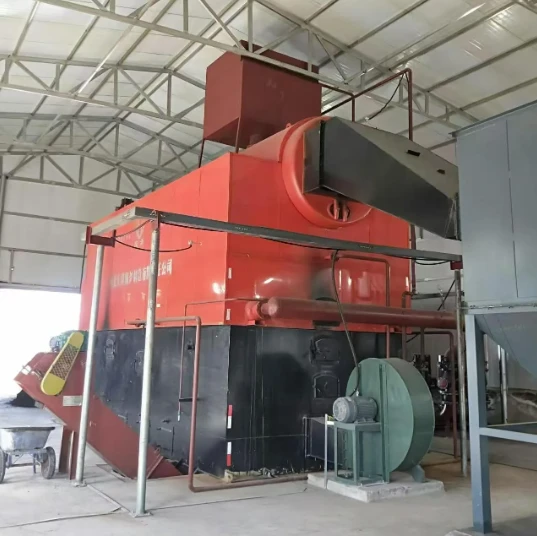
12월 . 04, 2024 17:47 Back to list
how to add water to steam boiler
How to Add Water to a Steam Boiler
A steam boiler is an essential component in various industrial processes, heating systems, and even in some homes. It generates steam through the heating of water, which is then used for heating or power generation. However, just like any other system, it requires regular maintenance and oversight. One critical aspect of maintaining a steam boiler is knowing how to add water correctly. In this article, we will discuss the importance of water in a steam boiler, the procedure for adding water, and best practices to ensure optimal performance and safety.
Understanding the Importance of Water in a Steam Boiler
Water is the lifeblood of a steam boiler. When water is heated, it transforms into steam, expanding and carrying energy that can be harnessed for various applications. The boiler operates on a closed system, so maintaining the correct water level is crucial. An inadequate water level can lead to overheating and potential damage to the boiler’s components, while excess water can reduce efficiency and lead to water hammer issues.
Regularly monitoring the water levels can help prevent catastrophic failures and ensure that the boiler operates efficiently. It is recommended to have an automatic water level control system in place, but understanding how to manually add water is still essential for users.
Steps to Add Water to a Steam Boiler
1. Turn off the Boiler Before you start, it’s essential to ensure that the boiler is not operational. Shut down the boiler following the manufacturer's guidelines. Allow it to cool down, as adding water to an extremely hot boiler can lead to thermal shock, potentially causing damage.
2. Check the Water Level Use the sight glass (if equipped) to check the current water level in the boiler. The preferred level is usually indicated on the sight glass, and it is vital to keep the water above the low-water cut-off level to prevent damage.
3. Prepare the Water Source Ensure that the water you are adding is clean and free of contaminants. Using distilled or deionized water is often recommended to prevent scaling and mineral buildup inside the boiler.
4. Locate the Water Fill Valve The water fill valve is usually located on the boiler’s feed line. It may have a manual or automatic operation, depending on the system design.
5. Open the Water Fill Valve If your boiler has a manual fill method, slowly open the water fill valve. Monitor the water level carefully through the sight glass as you add water. For automatic systems, ensure that they are functioning correctly and maintain an eye on the system to catch any irregularities.
how to add water to steam boiler

6. Close the Valve Once you have reached the desired water level, close the water fill valve securely. This prevents further water from entering the system and maintains the balance within the boiler.
7. Restart the Boiler If you have completed the water addition while following safety protocols, you can now restart the boiler. Check for any leaks or abnormalities as the system begins to heat the water. Ensure that all safety features are operational before full-scale operation.
Best Practices for Maintaining Proper Water Levels
1. Regular Monitoring Make it a habit to check the water levels several times a day, especially if the boiler is under heavy use. Automated monitoring systems can help with this task.
2. Daily Blowdown Performing a blowdown daily helps remove sediment and sludge that can accumulate in the boiler and affect water quality.
3. Regular Inspections Conduct regular inspections of the boiler and its components, including the water level controls, safety valves, and blowdown systems.
4. Training and Safety Train all personnel involved in boiler operations on the proper procedures, safety measures, and potential hazards associated with steam and hot water systems.
5. Keep Records Maintain logs of water levels, boiler pressure, and maintenance activities to identify trends and anticipate necessary upkeep or repairs.
Conclusion
Adding water to a steam boiler is a critical task that, when done correctly, ensures the safety and efficiency of the system. By understanding the proper steps and best practices to maintain water levels, you can help prevent operational disruptions and extend the life of the boiler. Always remember that safety is paramount; never hesitate to consult a professional if you are unsure about any aspect of boiler maintenance.
-
High-Efficiency Commercial Oil Fired Steam Boiler for Industry
NewsJul.30,2025
-
High-Efficiency Biomass Fired Thermal Oil Boiler Solutions
NewsJul.30,2025
-
High Efficiency Gas Fired Thermal Oil Boiler for Industrial Heating
NewsJul.29,2025
-
High-Efficiency Gas Fired Hot Water Boiler for Sale – Reliable & Affordable
NewsJul.29,2025
-
High Efficiency Biomass Fired Hot Water Boiler for Industrial and Commercial Use
NewsJul.29,2025
-
High-Efficiency Biomass Fired Hot Water Boiler for Industrial Use
NewsJul.28,2025
Related PRODUCTS






















